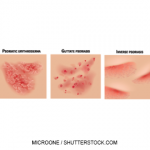Based in part on the strength of data for methotrexate monotherapy in the SEAM-PsA study, GRAPPA has now included methotrexate as a first-line treatment after nonsteroidal anti-inflammatory drugs (NSAIDs) for the treatment of enthesitis and dactylitis in patients with psoriatic arthritis.5
The second study of note is the SPIRIT-H2H trial, in which ixekizumab was compared with adalimumab for the treatment of psoriatic arthritis.6 In this study, 566 patients were randomized to receive either ixekizumab or adalimumab. The primary end point assessed the superiority of ixekizumab vs. adalimumab at week 24, measured by the proportion of patients who simultaneously achieved ACR50 and Psoriasis Area and Severity Index (PASI) 100.
Ixekizumab is an inhibitor of interleukin (IL) 17, and Dr. Mease notes that, prior to this study, there was a general perception that IL-17 inhibitors were helpful only in treating skin psoriasis and not the other domains of psoriatic arthritis. However, in the SPIRIT-H2H study, ixekizumab was non-inferior to adalimumab with respect to ACR50, with 51% of patients treated with ixekizumab achieving this target vs. 47% of patients on adalimumab. Ixekizumab was superior to adalimumab for PASI 100 response, with 60% of patients on ixekizumab vs. 47% of patients on adalimumab achieving this goal (P=0.001). Fewer serious adverse effects were seen in the ixekizumab group than in the adalimumab group (3.5% vs. 8.5%, respectively).
Given that the participants in this study were patients with psoriatic arthritis with inadequate response to at least one conventional synthetic disease-modifying anti-rheumatic drug (csDMARD), this study demonstrates that ixekizumab is an appealing option across musculoskeletal, as well as skin domains, in psoriatic arthritis for patients naive to biologic therapy.
The third study of importance is the EXCEED trial, which evaluated the efficacy and safety of secukinumab vs. adalimumab as first-line biologic monotherapy for 52 weeks in patients with active psoriatic arthritis.7 The primary end point in this study was ACR20.
A total of 853 patients with psoriatic arthritis were randomized to either the secukinumab group or the adalimumab group. By week 52, 67% of patients in the secukinumab group achieved ACR20 response and 62% of patients in the adalimumab group achieved this response (odds ratio 1.30, 95% confidence interval 0.98–1.72; P=0.0719), and the primary end point of superiority of secukinumab to adalimumab was not met.
Dr. Mease points out, however, that although only 14% of patients in the secukinumab group discontinued treatment by week 52, this number was 24% in the adalimumab group. This not only demonstrates that secukinumab may have greater treatment retention than adalimumab, but it also had a significant impact on the results of this study. If the study authors had used the non-responder imputation (NRI) method of analysis (i.e., if a subject drops out, that individual is assumed to be a non-responder independent of whether or not the subject was responding to treatment at the time of dropout), then this would have been a positive study.



